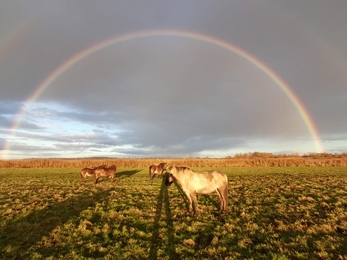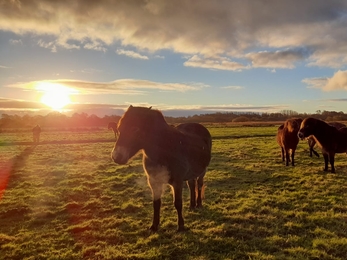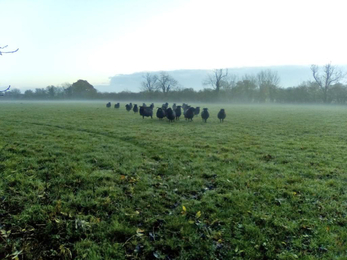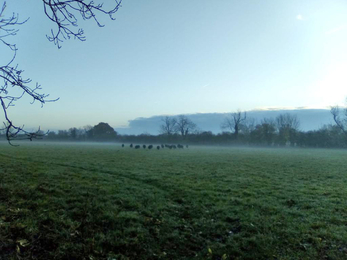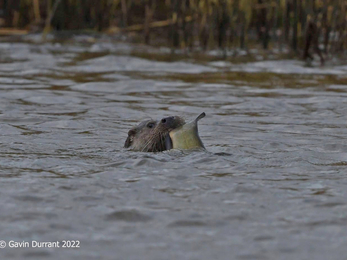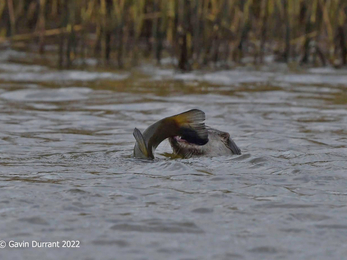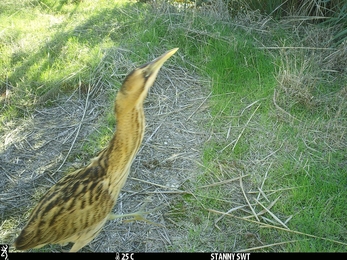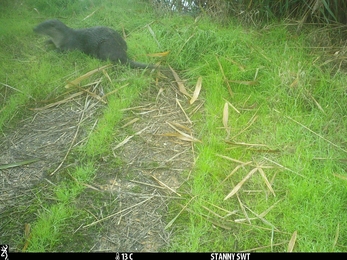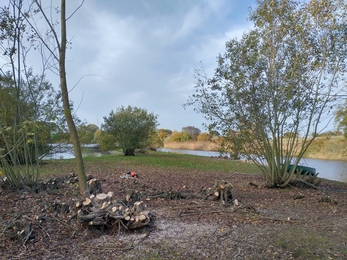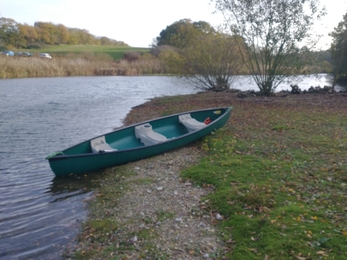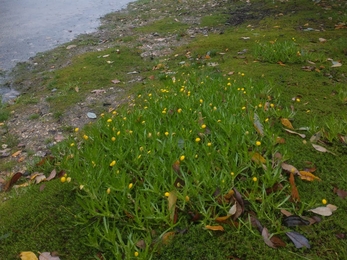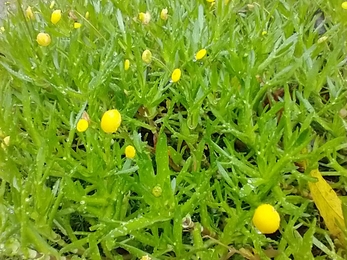Weekly wild news from our reserves - 9 December 2022
Sunrise at Carlton Marshes – Lewis Yates
Early morning checks on the conservation grazing ponies at Carlton Marshes were certainly worth the effort this week when the sunrise coincided with a shower creating these magical scenes. Wardens Frances Lear and Lewis Yates braved the rain and were rewarded with wonderful views in the low morning light.
Misty morning
Reserves Officer Susan Stone was also treated to some lovely morning vistas whilst checking the Hebridean sheep at Martin’s Meadows. Grazing the meadows at this time of year will create ideal conditions for orchids and other flowers in the spring.
Fish dinner
Warden Gavin Durrant was lucky enough to watch this otter catch a tench from the river at Carlton Marshes this week. The elusive otter is one of our top predators, feeding on fish (particularly eels and salmonids), waterbirds, amphibians and crustaceans. Otters are well suited to life on the water as they have webbed feet, dense fur to keep them warm, and can close their ears and nose when underwater.
Ash dieback
First confirmed in the UK in 2012, ash dieback, also known as 'Chalara' or Chalara ash dieback, is a disease of ash trees caused by a fungus called Hymenoscyphus fraxineus. The disease spread quickly and is now affecting woodlands across the UK, leading to the death of thousands of trees.
When it is safe to do so we leave affected trees in situ as the resulting dead and rotting wood has many benefits to biodiversity. In some cases, however, the fallen trees need clearing for safety reasons. At Redgrave & Lopham Fen several trees had fallen onto the fence and gate of the yard – warden Richard Young and his team had the epic task of clearing them this week! We clear the wood out of the way, but still retain most of the deadwood on the reserve.
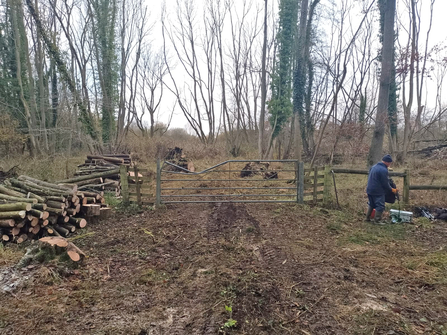
This gate was hidden last week - Richard Young
White fronted geese
Wintering geese are starting to appear on the grazing marshes at Trimley Marshes. Regular Trimley volunteer, Justin Zantboer managed to get this picture of some Eurasian white-fronted geese that have arrived to feed on the short grassland sward, which is maintained by cattle grazing and mowing operations.
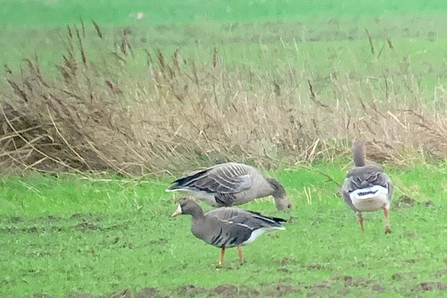
Eurasian white-fronted geese - Justin Zantboer
Candid camera
We use trail cameras to help us build a picture of which key species are currently using our reserves. At Stanny Marshes we knew we had a bittern on site in recent weeks, but we were not expecting it to show quite so well on a trail camera! Site Manager Andrew Excell was delighted that an otter has also been recorded frequenting the reserve.
Teamwork
Recently the North East Suffolk wardens teamed up for two days of coppicing willow on Lound Lakes island. Coppicing will help create a structured variation of regeneration growth on the island, which will be good for nesting birds and small mammals. The team cut rods, bundled and tied them, and pulled them across to land via kayak.
During the work a new species for the reserve, brass buttons Cotula coronopifolia, was discovered growing on the island. Brass buttons is a slow growing non-native plant, but this specimen was not deemed to be causing any issues.


